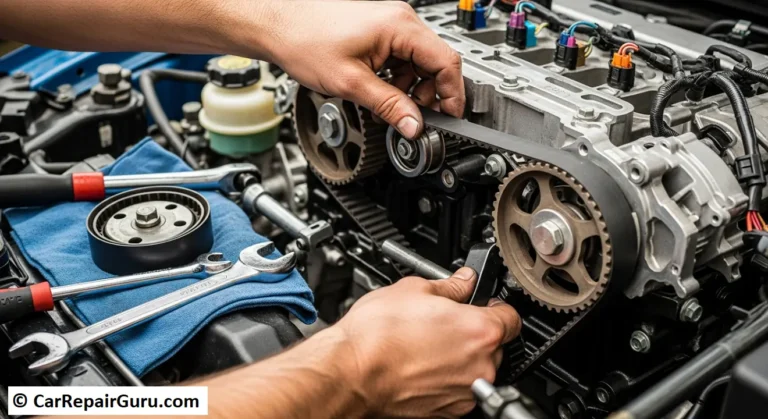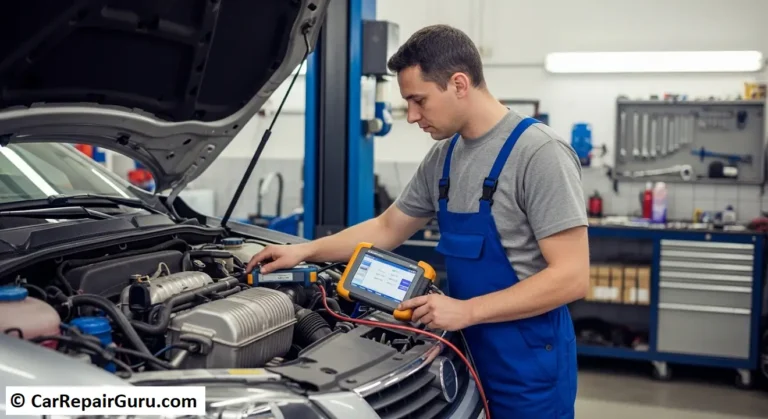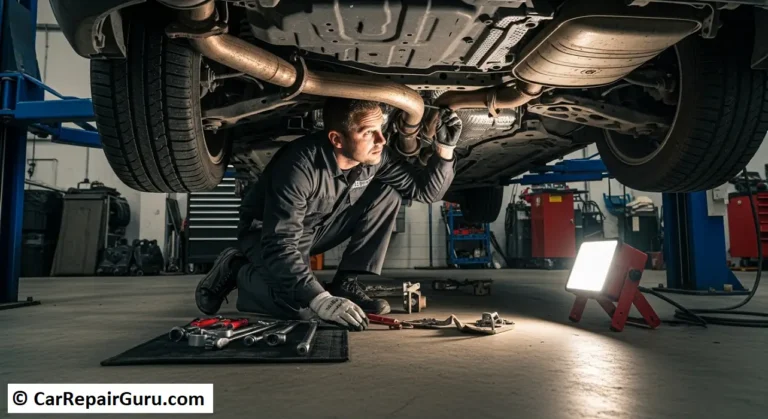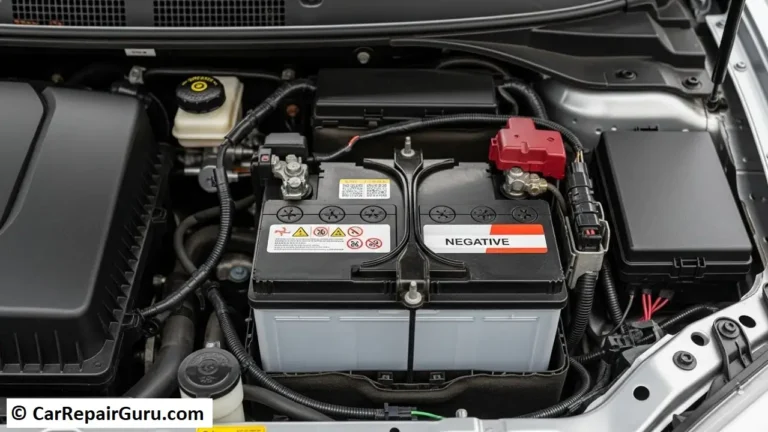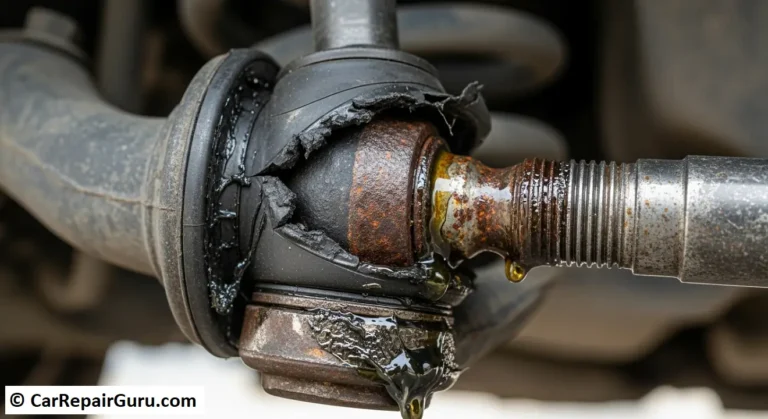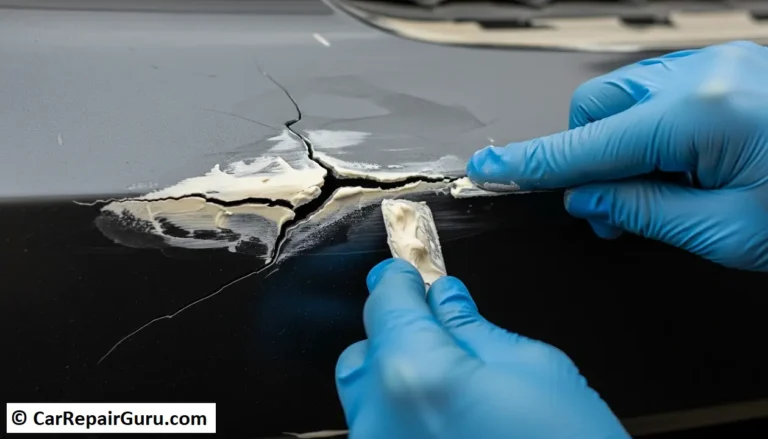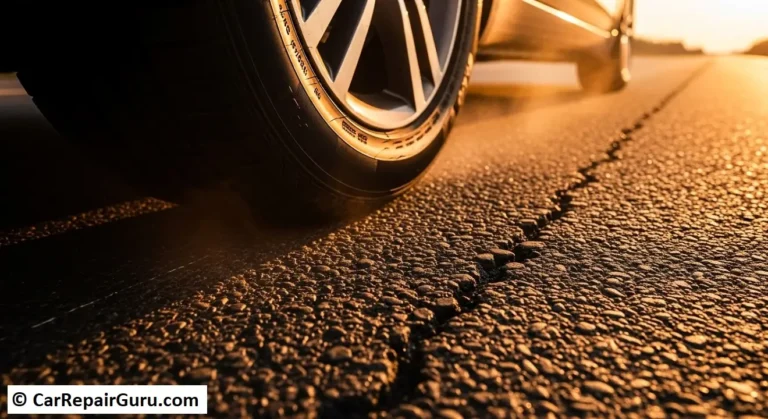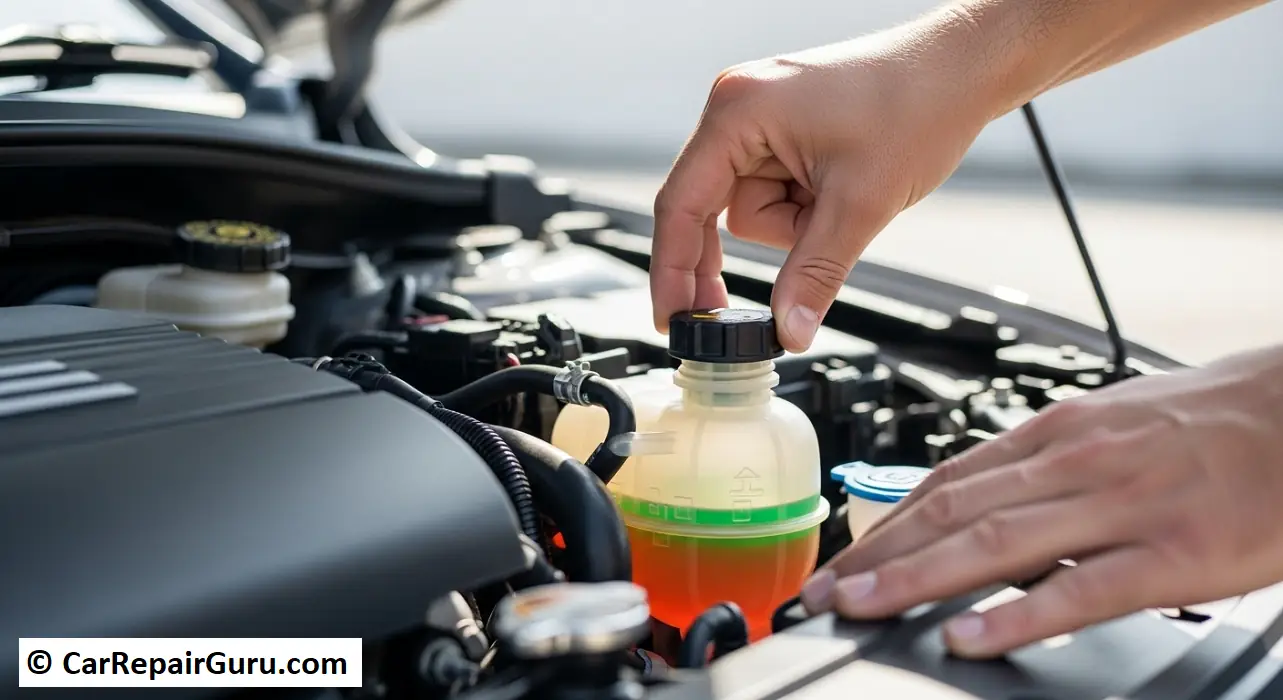
That sinking feeling. A little light flicks on your dashboard—a tiny thermometer icon, or maybe the dreaded “Check Engine” light. Perhaps you’ve noticed your car’s temperature gauge creeping higher than usual on a warm day. These are your car’s ways of telling you something needs attention, and one of the most common culprits is your engine’s coolant.
Think of coolant as your engine’s best friend. It’s the hardworking fluid that prevents your engine from overheating in the summer and freezing solid in the winter. Ignoring it can lead to some of the most catastrophic and expensive repairs a car owner can face.
The good news? Learning how to check car coolant is one of the easiest and most important pieces of routine maintenance you can perform. This guide will walk you through everything you need to know, from checking the level in 5 simple steps to understanding common problems and fixes. No mechanic experience necessary!
Before You Start – The Most Important Safety Rule
If you only remember one thing from this entire article, let it be this:
NEVER, EVER OPEN THE RADIATOR CAP OR COOLANT RESERVOIR WHEN THE ENGINE IS HOT OR WARM.
When your engine is running, the cooling system is hot and highly pressurized. Opening the cap on a hot system can cause boiling-hot coolant to erupt violently, leading to severe burns. Think of it like shaking a hot can of soda and then popping the top.
The safest time to check your coolant is in the morning before you’ve driven the car, or after it has been parked for several hours and is completely cool to the touch.
Coolant vs. Antifreeze – Are They the Same Thing?
You’ll often hear the terms “coolant” and “antifreeze” used interchangeably, which can be confusing. Let’s clear that up right away.
- Antifreeze is the concentrated liquid, usually made of ethylene glycol or propylene glycol. In its pure form, it provides the essential properties that prevent freezing and raise the boiling point.
- Coolant is the mixture that actually circulates through your engine. It’s a 50/50 blend of antifreeze and distilled water. This specific ratio provides the optimal balance of heat protection.
Think of it like coffee. Antifreeze is the strong coffee concentrate, and coolant is the ready-to-drink coffee after you’ve mixed it with water. For simple top-offs, most auto parts stores sell “prediluted 50/50 coolant,” which is the perfect, ready-to-use solution for beginners.
How to Check Your Coolant Level in 5 Easy Steps
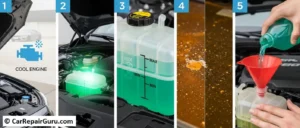
Ready to get started? This simple process takes less than five minutes.
Step 1 – Park on a Level Surface and Ensure the Engine is Cool
First, make sure your car is parked on flat ground. A slope can give you an inaccurate reading. Most importantly, double-check that the engine is cold. Touch the hood; if it feels warm, wait longer.
Step 2 – Locate the Coolant Reservoir (Overflow Tank)
Pop the hood of your car. Don’t be intimidated by what you see. You are looking for the coolant reservoir. This is typically a semi-transparent plastic tank located near the radiator at the front of the engine bay. It will have a screw-on cap, which often has a warning symbol (a steaming radiator) or is labeled “Engine Coolant” or “Coolant.”
Step 3 – Check the Coolant Level Against the Markings
On the side of the plastic reservoir, you will see two lines: one marked “MIN” (or “LOW”) and one marked “MAX” (or “FULL”). The level of the colorful liquid inside should be somewhere between these two lines. There’s no need for it to be exactly on the “MAX” line, but it should never be at or below the “MIN” line.
Step 4 – Inspect the Coolant’s Condition and Color
Don’t just glance at the level—take a moment to look at the coolant itself. Healthy coolant should be a vibrant color (like green, orange, pink, or blue) and translucent. If the fluid looks rusty, brown, sludgy, or has debris floating in it, your cooling system needs attention. This is a sign the coolant is old and has lost its anti-corrosive properties.
Step 5 – Topping Off Your Coolant (If Necessary)
If your coolant is a little low, topping it off is easy. Slowly unscrew the cap of the coolant reservoir (again, NOT the radiator cap). Using a funnel, carefully pour the correct type of prediluted 50/50 coolant into the tank until the level reaches the “MAX” line. Do not overfill it. Screw the cap back on securely, and you’re done!
Coolant Safety Tips – Handling Antifreeze the Right Way
Beyond checking the system when it’s cool, a few more safety tips are crucial when you’re adding coolant to your car.
Wear Protective Gear: It’s a good idea to wear gloves and safety glasses. Antifreeze can irritate the skin and eyes.
Antifreeze is Highly Toxic: This is critical. Its sweet smell and taste can be fatally attractive to pets and children. A single lick can be lethal for a cat or small dog.
Clean Up Spills Immediately: Use clay cat litter, sand, or special absorbent pads to soak up any spills. Never just hose it down, as it can contaminate groundwater.
Store and Dispose of Properly: Always store coolant in a clearly marked, tightly sealed container out of reach of children and pets. Used antifreeze is hazardous waste and must be taken to a recycling center or an auto shop for proper disposal.
Signs and Symptoms of Low Coolant
Your car is pretty good at telling you when something is wrong. Here are the most common low coolant symptoms to watch for:
- High-Temperature Gauge: The needle on your dashboard’s temperature gauge climbs into the red “H” zone.
- Dashboard Warning Light: A coolant temperature warning light illuminates.
- Heater Isn’t Working: The car’s heater blows lukewarm or cold air, even when the engine has warmed up. This is because the heater core relies on hot coolant to generate heat.
- A Sweet Smell: Leaking antifreeze has a distinct, sweet, syrupy odor. If you smell this inside or outside your car, you likely have a leak.
- Visible Puddles: You spot a brightly colored puddle (green, orange, pink) on the ground under your car.
What to Do If Your Coolant Is Low
Finding a low coolant level can be concerning, but the fix is often straightforward. Here’s your game plan.
- Confirm the Engine is Cool: Safety first, always. Before you do anything else, make sure the engine has had several hours to cool down.
- For a Minor Drop, Simply Top It Off: If the level is just a bit below the “MIN” line, follow Step 5 from our guide above. Add the correct 50/50 prediluted coolant to bring the level up to the “MAX” line.
- Monitor for Leaks: A low coolant fix isn’t always permanent. After topping it off, check the level again in a few days. If it has dropped again, you have a leak somewhere in the system that needs to be addressed.
- When to See a Mechanic: If the reservoir was completely empty, if the level keeps dropping after you refill it, or if you see any of the serious symptoms mentioned below, it’s time to let a professional diagnose the problem.
Common Coolant Problems and Fixes
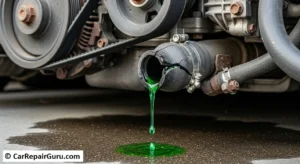
Sometimes the issue is more complex than just a low level. Here are some common coolant problems and what they mean.
Problem: Persistent Coolant Loss (Leaks)
- Cause: A leak is the most common reason for constantly low coolant. Coolant leak causes range from a simple loose hose clamp to a cracked radiator, a failing water pump, or a pinhole in a hose.
- The Fix: Inspect all visible hoses for cracks or drips. Check that the clamps are tight. If you can’t spot the source, a mechanic can perform a pressure test to find the leak.
Problem: Rusty, Brown, or Sludgy Coolant
- Cause: The anti-corrosion additives in the coolant have broken down, allowing rust and sediment to build up inside your engine and radiator.
- The Fix: The system needs a complete coolant flush and fill. This process removes all the old, contaminated fluid and replaces it with fresh coolant, restoring protection.
Problem: Milky or Oily Coolant
- Cause: This is a very serious sign. It almost always indicates a blown head gasket, which is allowing engine oil to mix with your coolant.
- The Fix: Stop driving the car immediately. This requires a major, expensive engine repair by a qualified mechanic to prevent destroying the engine.
Problem: Engine Overheats Even with Full Coolant
- Cause: This means the coolant isn’t circulating properly. The problem could be a stuck thermostat, a failing water pump, or a clogged radiator.
- The Fix: This requires professional diagnosis. A mechanic will need to test the components to find the one that’s failing.
What Happens If You Ignore Low Coolant?
We’ve covered the “how,” but it’s equally important to understand the “why.” Ignoring low coolant or a car overheating is a gamble you don’t want to take. The potential consequences are severe:
- Blown Head Gasket: Overheating can cause this critical seal to fail, leading to thousands of dollars in repairs.
- Warped Cylinder Heads: Intense heat can physically deform the metal of your engine’s cylinder heads, another massive repair bill.
- Complete Engine Seizure: In the worst-case scenario, the engine’s internal parts can get so hot they melt and fuse together, completely destroying the engine.
The five minutes it takes to check your coolant can literally save you from buying a new engine.
Choosing the Right Coolant for Your Car
Using the wrong type of antifreeze can cause corrosion and damage your cooling system. So, what coolant to use? Here’s how to find the right one:
- Check Your Owner’s Manual: This is your #1, most reliable source. It will specify the exact type of coolant your vehicle requires.
- Look at the Color: Coolant comes in various colors (green, orange, pink, blue, yellow) which often correspond to different chemistries (IAT, OAT, HOAT). While not a foolproof system, matching the color of your existing coolant is a good starting point.
- Ask an Expert: Your local auto parts store can look up your car’s make, model, and year to tell you exactly which product to buy.
Making Coolant Checks a Regular Habit
Checking your car’s coolant is a simple, fast, and incredibly important part of responsible vehicle ownership. By making it a regular habit, you empower yourself to catch small problems before they become catastrophic failures.
Remember the key takeaways: always check the engine when it’s cool, inspect both the level and the condition of the fluid, and always use the correct type of coolant for your car. If you ever find a serious issue like milky fluid or a persistent leak, don’t hesitate to consult a certified mechanic. A few minutes of your time every few months is a tiny price to pay for a healthy engine and peace of mind on the road.
FAQ About Check Car Coolant
How often should I check my car coolant?
A good rule of thumb is to check it at least twice a year—once before summer and once before winter. It’s also wise to check it before any long road trip.
Can I just add water to my coolant?
In an absolute emergency to get off the side of the road, yes, you can add water (distilled is best). However, this dilutes the mixture, reducing its boiling and freezing protection. You should have the system flushed and refilled with the proper 50/50 mix as soon as possible.
What’s the difference between the coolant reservoir and the radiator?
The radiator is the core of the cooling system. The reservoir is a plastic overflow tank connected to it. For routine checks and top-offs, you should only ever interact with the reservoir.
My coolant is low but I don’t see a leak. Why?
You could have a very small, slow leak that evaporates before it drips to the ground. It could also be a sign of a more serious internal engine leak (like an early-stage head gasket issue). Monitor it closely, and if it continues to drop, have it inspected.
